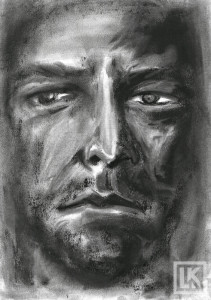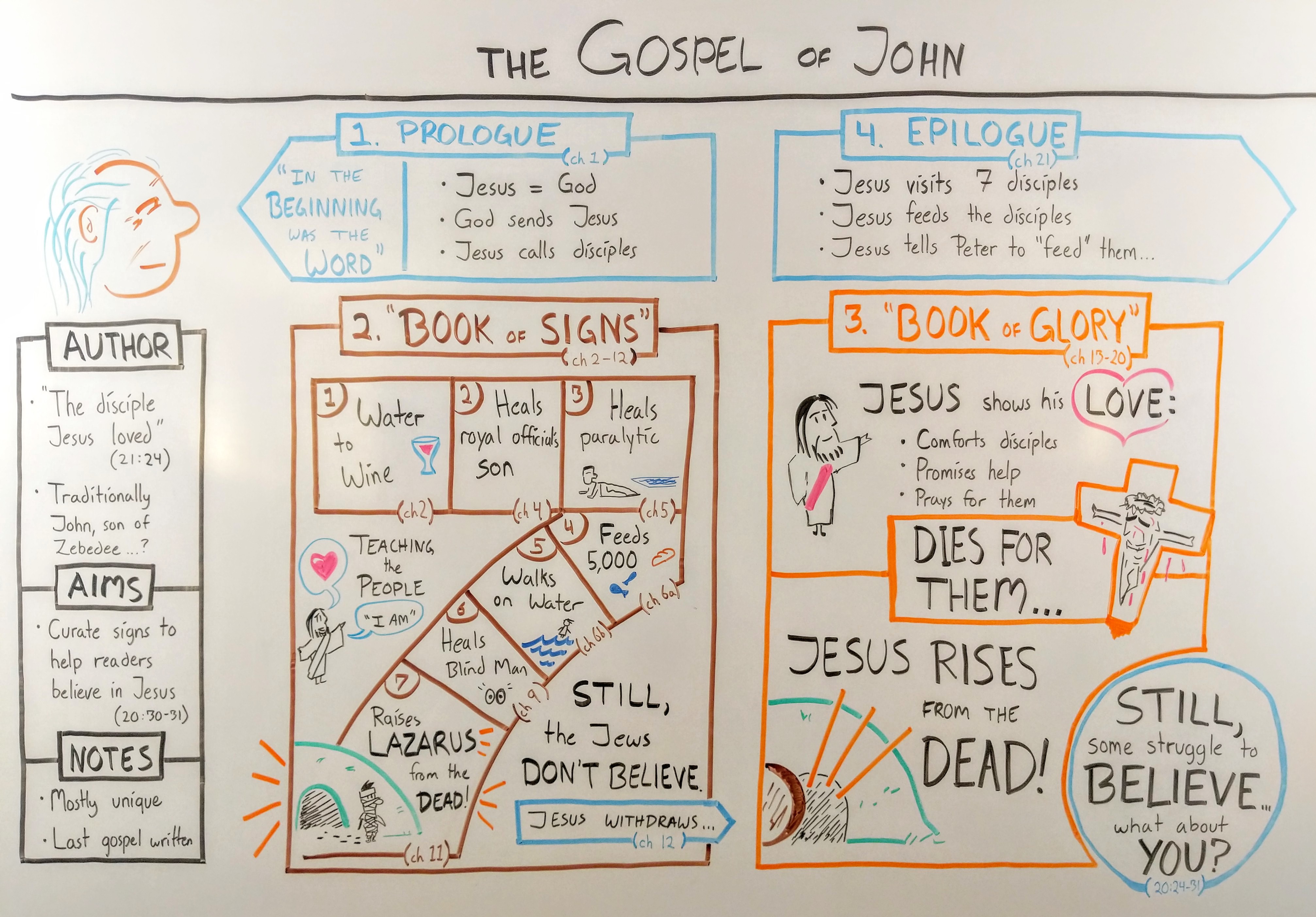John is the story of Jesus: God who came down to save the world. This book was written by a disciple whom Jesus loved—the Church traditionally attributes it to John.
John is the fourth and last Gospel (an account of Jesus’ life and ministry) in the new Testament. John focuses on the deity of Christ more so than the other four: we see Jesus as the Word of God, the Son of God, and God Himself. Jesus is a great miracle worker, an omniscient teacher, a compassionate provider, and a faithful friend.
John may be the final Gospel, but this narrative begins far, far earlier than the other three. While Mark begins with Jesus’ adult ministry, and Matthew and Luke begin with His physical birth, John opens with the beginning of all creation: “In the beginning was the Word, and the Word was with God, and the Word was God.”
Jesus presents Himself as God incarnate throughout the Gospel of John, often using the phrase “I am” (the memorial name of God revealed in Exodus). John records several “I am” statements from Jesus throughout this book:
- “I am the bread of life” (Jn 6:35, 41, 48, 51)
- “I am from [God], and He sent Me” (Jn 7:29)
- “I am the Light of the world” (Jn 8:12; 9:5)
- “I am [God]” (Jn 8:58)
- “I am the door” (Jn 10:7, 9)
- “I am the good shepherd” (Jn 10:11, 14)
- “I am the Son of God” (Jn 10:36)
- “I am the resurrection and the life” (Jn 11:25)
- “I am the way and the truth and the life” (Jn 14:6)
- “I am the vine” (Jn 15:1, 5)
The Gospel of John makes a strong argument for Jesus as the exclusive savior, and the only way to know God (Jn 1:18; 14:6). Jesus is greater than the Jewish heroes Moses and Abraham (Jn 1:17; 8:58); Jesus Christ is God in the flesh, and John challenges us to believe in Him.
Theme verse of John
“Therefore many other signs Jesus also performed in the presence of the disciples, which are not written in this book; but these have been written so that you may believe that Jesus is the Christ, the Son of God; and that believing you may have life in His name.” (Jn 20:30–31)
John’s role in the Bible
 In addition to this Gospel, the church traditionally associates John with three New Testament letters (First, Second, and Third John) and the prophetic book of Revelation. He was a leader in the early church, and he probably wrote his documents after most of the other New Testament books were already written.
In addition to this Gospel, the church traditionally associates John with three New Testament letters (First, Second, and Third John) and the prophetic book of Revelation. He was a leader in the early church, and he probably wrote his documents after most of the other New Testament books were already written.
The miracles recorded in John’s gospel are written that the reader would believe in Jesus and find life in His name (Jn 20:30–31). Therefore, much of John’s material directly states who Jesus is, not just what He does or says.
Unlike Luke, John does not aim to chronicle the whole life of Christ—in fact, John doesn’t think the world could contain such a document (Jn 21:25). Instead, John presents a few signs and teachings that should compel us to believe in Jesus.
Quick outline of John
- Prologue (Jn 1)
- The “Book of Signs” (Jn 2–12)
(Seven miracles that John uses to show Jesus is the Son of God)Turning water to wine (Jn 2)- Healing the nobleman’s son (Jn 4)
- Healing the sick man at the pool of Bethesda (Jn 5)
- Feeding 5,000 (Jn 6:1–14)
- Walking on water (Jn 6:15–21)
- Healing the blind man (Jn 9)
- Raising Lazarus from the dead (Jn 11)
- The Jews reject Jesus, and Jesus withdraws to his disciples (Jn 12)
- The “Book of Glory” (Jn 13–20)
(Jesus demonstrates his love for the disciples, and the Father glorifies the Son)- Jesus’ final teachings (Jn 13–16)
- Jesus’ high priestly prayer (Jn 17)
- Jesus’ betrayal, trial, and death (Jn 18–19)
- Jesus’ resurrection (Jn 20)
- Epilogue: Jesus feeds seven disciples, reinstates Peter (Jn 21)





